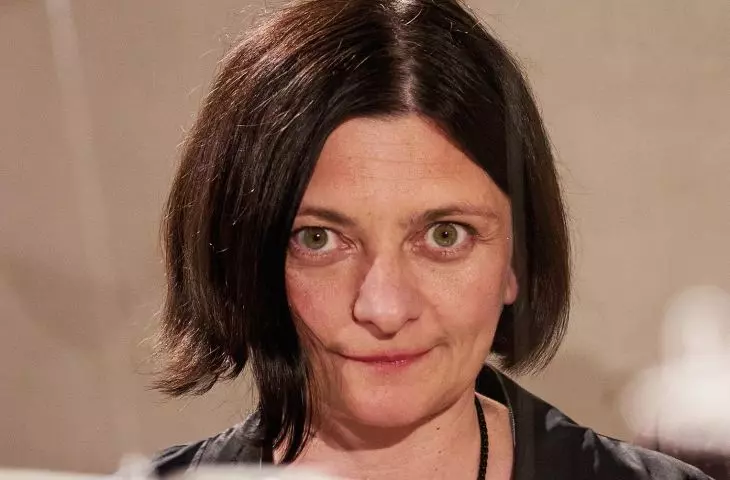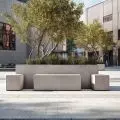The article is from A&B issue 9|23
What is your favorite architect and what do you value her most for?
After one of my lectures about Alina Scholtz, retired Prof. Dr. Eng. arch. accused me of using only her name when I talk about her. As if we knew each other, were friends. Well, he didn't mention her at all in his lectures, so we passed each other by. And it's a shame, because there was a chance for a personal conversation. A mediated meeting with her is possible thanks to found projects, few notes and obliterated realizations. And from them one can learn from Alina Scholtz the most important thing: to think more about flows than solids in a redesigned city.
Alina Scholtz
photo from family archives, courtesy of Barbara Bujnicka-Chudzik
While researching the output of BOS's „Greenery” studio, which Alina Scholtz headed, we realized that we should learn many things from greenery designers. To think in terms of urbiekology, so that the city is based on natural natural processes. To work with living matter, to treat vegetation as an equivalent component to buildings. To hear the rustling of aspen leaves as a sound barrier, to see vines as an acoustically significant shell of the estate. To also consider terrain, its modeling and water in every state of aggregation as material. Because terrainforming sets the air in motion and creates microclimates. Alina Scholtz showed us how to work with processes spread out over time. That sometimes after realization it takes decades for an idea to fulfill itself. So we should design transitional forms with a variable, evolving composition, in which certain elements will fade or die before others fully develop. On her designs, she drew trees as spirals, as they grow over time. We recently spotted the same symbols drawn in pencil on a student project by Sophia Garlinska-Hansen. Could it be that this drawing underwent a revision in the late 1940s during a design class in the department of Professor Romuald Gutt, whom Scholtz assisted?
Swimming pools in the reception garden of the Polish Embassy in Pyongyang (Pyongyang),—a reconstruction based on a concept from July 1966, presented at the 10th São Paulo Art Biennale in 1969: Central mockup: Onimo
photo: Michal Matejko
Alina gave the city's parks a spatio-temporal dimension by planting trees in a geometric order, using the quincunx described in 1450 by Leon Battista Alberti. This Renaissance planting arrangement means that the tree canopies don't blend together and, when walking, one perceives them as changing vistas. The trees build a dense „roof” of high-set crowns, leaving transparency at eye level. Scholtz worked with variability, cyclicity, diurnal rhythms, with seasons, with weather phenomena. To this day, I'm still very impressed by her „terrace pond,” after a downpour so collecting rainwater that several horizontal water planes appear within a single basin.
Pools in the reception garden of the Polish Embassy in Pyongyang, Pyongyang—a reconstruction based on the July 1966 concept presented at the 10th São Paulo Art Biennale in 1969: Headquarters, model: Onimo
Photo: Michal Matejko
Scholtz showed us that it is not necessary to make grand architectural gestures. That small repetitive reproduction works that measure time, dictated by the imagination of more distant consequences, also count. That gardening work, too, can be understood as a way of doing architecture. One can care for the microcosm of a pot of water plants, in the documentation signed by her „water vase”. Thank you Luta.
Research and popularization work restoring knowledge about the biography and achievements of Alina Scholtz was conducted by the Museum of Warsaw in 2019-2022.
The team: Klara Czerniewska-Andryszczyk, Simone De Iacobis, Natalia Budnik, Ewa Perlinska-.
-Kobierzynska and Małgorzata Kuciewicz.
Malgorzata Kuciewicz
CENTRALA



























